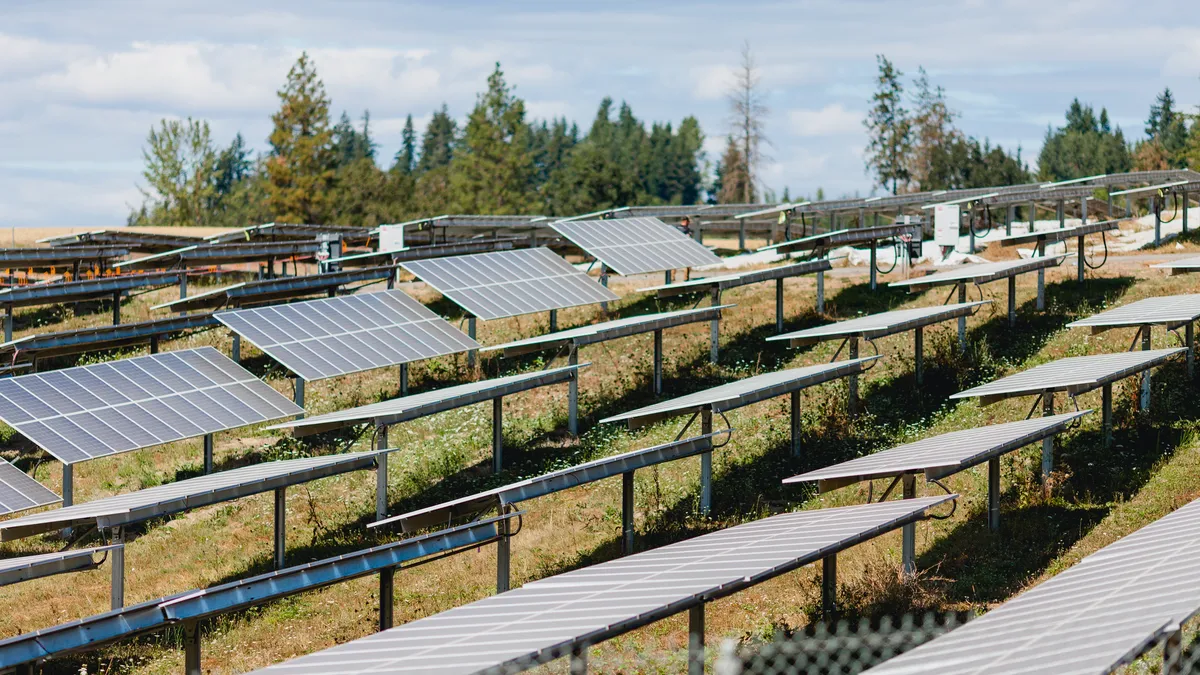Dive Brief:
-
The U.S. Court of Appeals for the Ninth Circuit on Tuesday upheld the Federal Energy Regulatory Commission’s 2020 revamp of the Public Utility Regulatory Policies Act, a law designed to spur small-scale renewable energy and cogeneration.
-
While rejecting arguments from the Solar Energy Industries Association, the Sierra Club and others, the court said FERC needed to conduct an environmental assessment to consider the effects of its revised PURPA rules.
-
PURPA is one of the most important tools for increasing competition in areas that are dominated by traditional monopoly utilities, according to Ben Norris, SEIA senior director of regulatory affairs. “We are disappointed that the Ninth Circuit wholly deferred to [FERC] on matters that discourage the development of qualifying facilities and ultimately make it harder to get more clean energy on the grid,” he said in a statement.
Dive Insight:
PURPA, passed by Congress in 1978, aimed to spur domestic energy production. Under the law, utilities outside organized wholesale markets are generally obligated to buy electricity from wind and solar facilities no larger than 80 MW, called qualifying facilities, or QFs.
In the late 2010s, some states and utilities started calling for changes to FERC’s PURPA rules, arguing in part it forces utilities to buy power they don’t need. They also argued renewable energy developers were skirting the 80-MW project cap by building 80-MW facilities next to each other that should be considered a single project.
In a 3-1 decision, FERC in July 2020 revised its PURPA rules, which are implemented by state utility commissions. In Order 872, the agency gave states the ability to require variable energy rates in a qualifying facility contract instead of a fixed rate. FERC also gave states more flexibility in determining a utility’s avoided cost, a key input into QF rates. In addition, it revised its “one-mile” rule by setting an irrebuttable presumption that affiliated facilities are separate only when they are 10 miles apart.
The Ninth Circuit largely upheld FERC’s decision, saying the agency had the authority to change its PURPA requirements. The court rejected arguments that FERC’s revisions violated PURPA’s requirement that the agency encourage QF development.
“It is easy to imagine ways in which FERC could have provided even more encouragement to QFs,” the court said. “But PURPA does not require FERC to encourage QFs to the maximum extent possible, regardless of any countervailing interests.”
Generally, the court said FERC’s decisions to revise various PURPA provisions were reasonable under the Administrative Procedure Act.
However, the court agreed with environmental organizations that FERC should have conducted an environmental assessment of its decision under the National Environmental Policy Act.
The court dismissed FERC’s arguments that its PURPA decision fell into a “categorical exclusion” from NEPA requirements and that it didn’t need to conduct an environmental review because the consequences of the decision weren’t reasonably foreseeable.
“Even if Order 872 did not authorize any particular project, it was eminently foreseeable that a regulatory change of this magnitude could produce significant environmental effects,” the court said.
It was a “near certainty” that some QFs could lose their status under the site rule, or that some states would eliminate the fixed-rate option to calculate avoided costs, the court said.
“Because many QFs rely on renewable power sources, it takes little imagination to see that a reduction in the incentives provided to QFs could, in turn, alter the mix of energy production, shifting production away from renewable production and toward fossil-fuel production,” the court said.
Although FERC’s failure to draft an environmental assessment was a “serious omission,” the court decided not to vacate the agency’s decision.
“In light of the significant disruptive consequences of vacatur — affecting not only FERC, but also state agencies and regulated entities — we remand to FERC without vacating Order 872,” the court said.
So far, FERC’s PURPA revamp hasn’t had a major effect on QF development, according to Metin Celebi, a principal at consulting firm The Brattle Group. Montana adopted the variable energy rate option in QF contracts last year, but many other states have not, he said.
PURPA obligations can have a major effect on some utilities. Idaho Power, for example, buys power from QFs totaling 1,135 MW, Idacorp, the utility’s parent, said in an early-August Securities and Exchange Commission filing. It has signed QF contracts for an additional 75 MW.
The Boise-based utility bought 1.5 million MWh from QFs in the first six months of this year, accounting for about 40% of its power purchases, according to the filing. It paid $62.16/MWh on average from the QFs compared to $75.07/MWh for its wholesale market purchases. In the same period last year, Idaho Power paid $60.60/MWh on average under its QF contracts and $43.36/MWh from the wholesale market.
Correction: This story has been updated to note Montana's adoption of a variable energy rate option for QF contracts.















